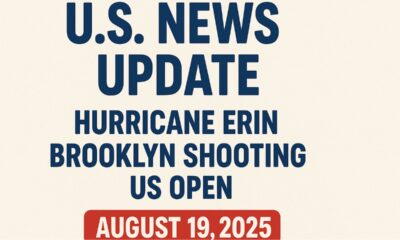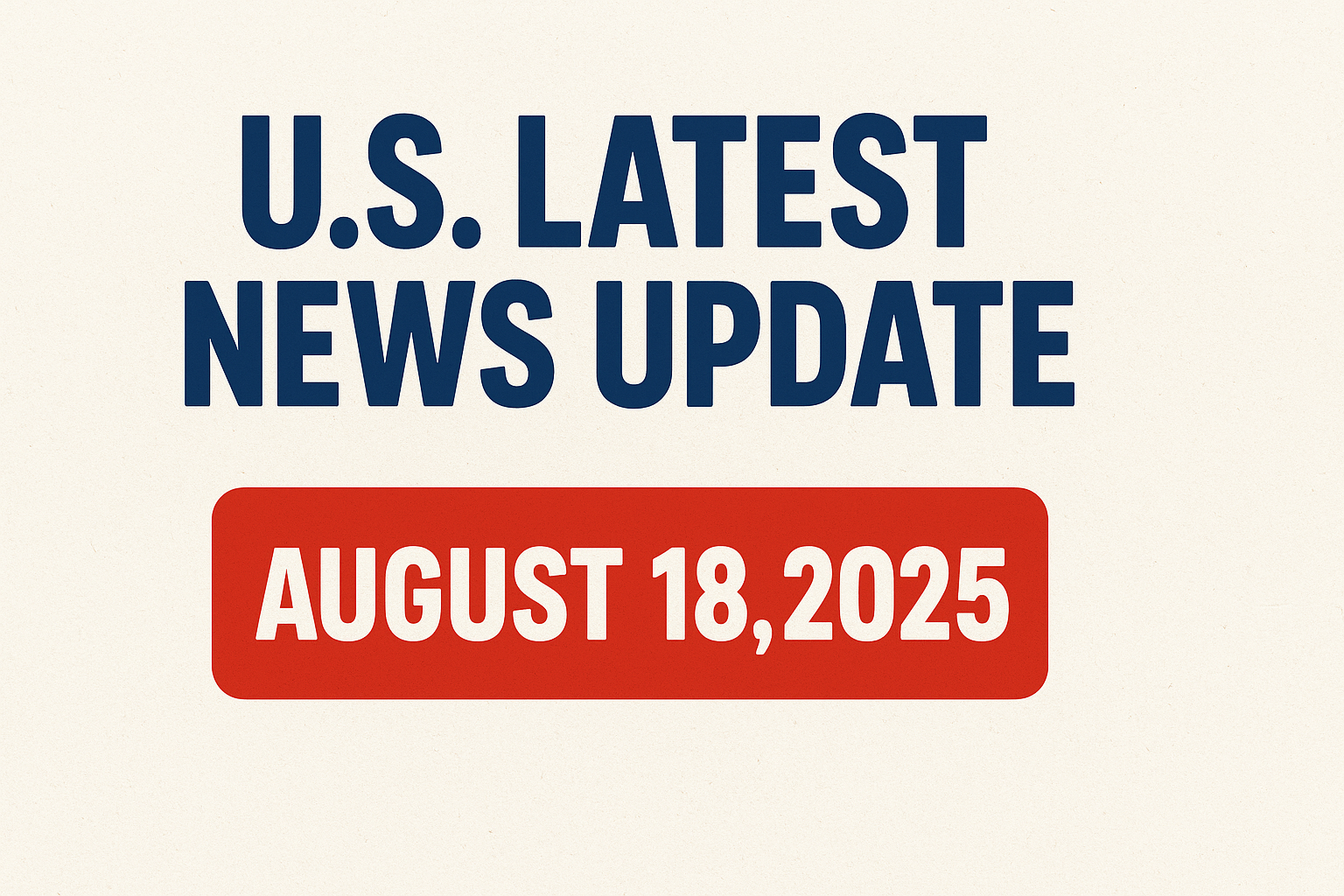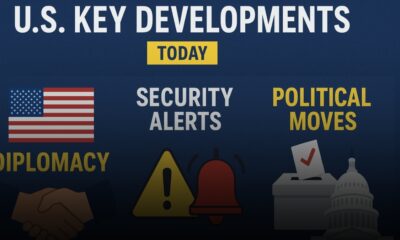Featured
CAD to USD | Understanding the Exchange Rate
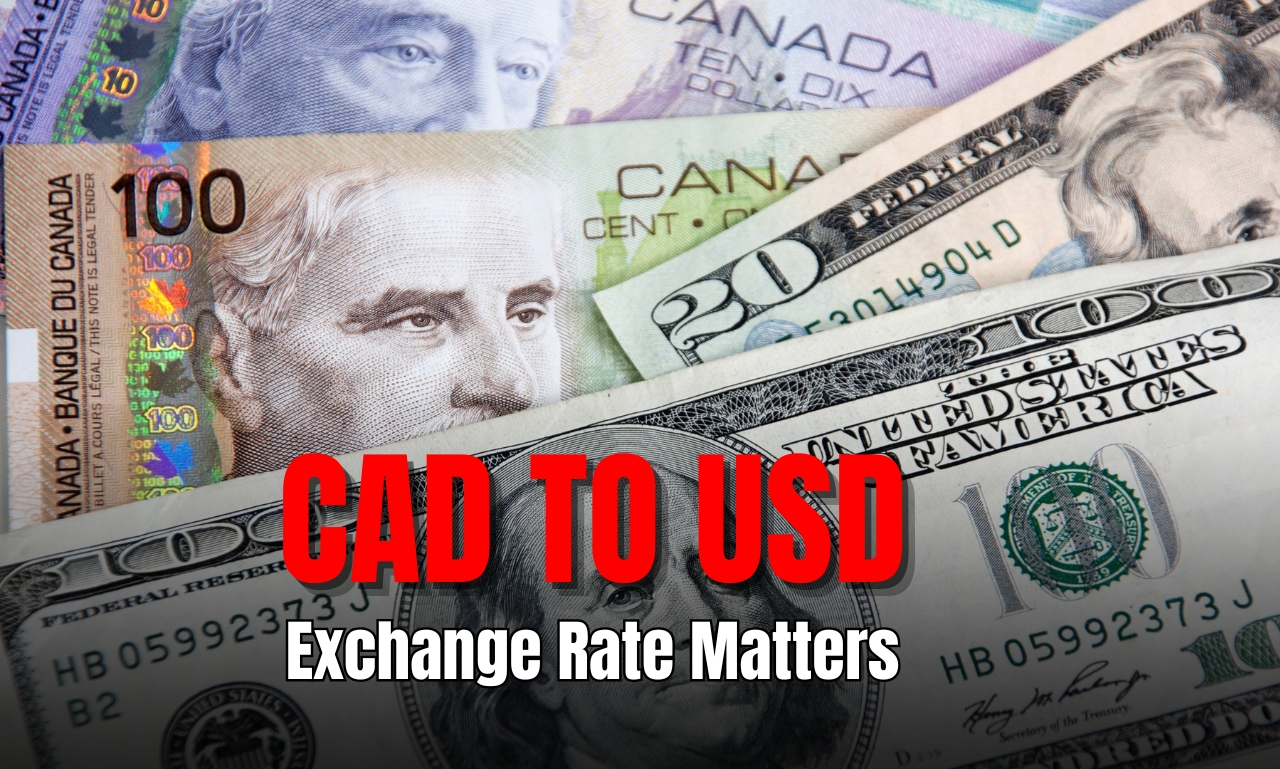
If you’re exchanging Canadian dollars for U.S. currency—whether for travel, business, or investment—it’s essential to understand the CAD to USD exchange rate. This rate directly impacts how much value you get during the swap. In this guide, you’ll learn the current rate, see real-world conversion examples, and discover what drives changes in this exchange rate.
What Is the CAD to USD Exchange Rate?
The CAD to USD exchange rate tells you how many U.S. dollars you receive for one Canadian dollar. Currently, 1 CAD = approximately 0.7280 USD, which means 100 CAD converts to about 72.80 USD.
Conversion Rate: 1 USD ≈ 1.37 CAD (static)
Why the Exchange Rate Matters
- Travel and Tourism: Your vacation budget in the U.S. depends on the exchange rate when exchanging your CAD.
- Cross-Border Trading and Transfers: Whether paying for U.S. services or sending money, every cent shifted impacts the total cost/value.
- Investment & Forex: CAD/USD is one of the most traded currency pairs—watching its movement is key for traders.
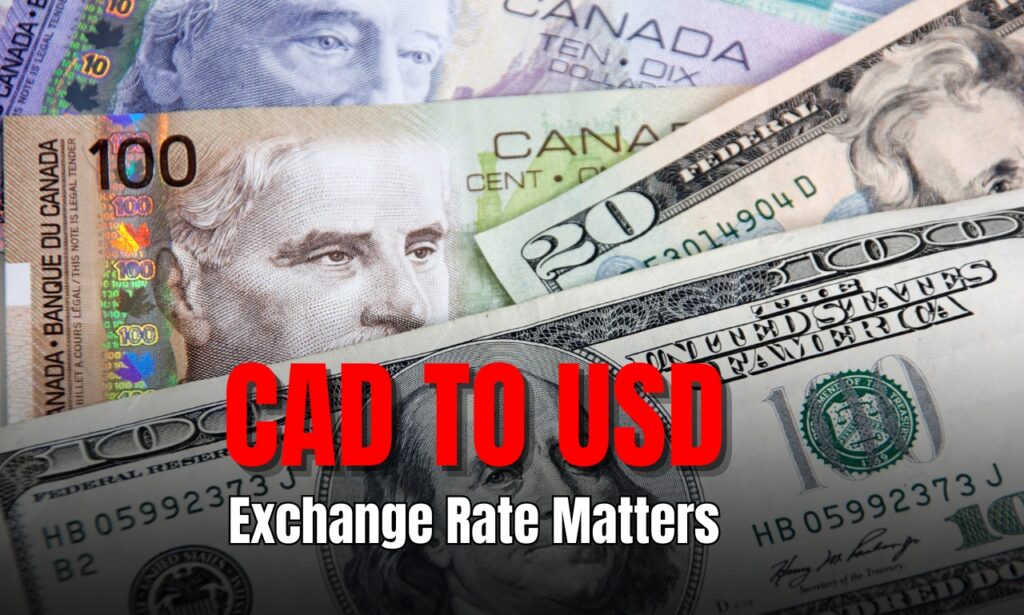
Recent Trends
According to recent data:
- Latest mid-market rate: 1 CAD = 0.7286 USD.
- Over the past 30 days, rates ranged from 0.7277 to 0.7366, averaging around 0.7312 USD.
Sample Conversion Table
| Amount (CAD) | Equivalent (USD) |
|---|---|
| 10 | 7.29 |
| 50 | 36.43 |
| 100 | 72.86 |
| 500 | 364.31 |
| 1,000 | 728.62 |
| 5,000 | 3,643.12 |
This demonstrates how rate shifts affect larger conversions.
Factors Influencing the Rate
- Interest Rate Differences: Diverging policies from Canada’s central bank and the U.S. Federal Reserve shape the flow of capital.
- Economic Indicators: Data on growth, inflation, and employment from both nations can strengthen or weaken their currencies.
- Global Market Sentiment: In economic uncertainty, investors tend to prefer one currency over the other, often favoring the U.S. dollar as a haven.
Smart Tips for Exchanging CAD to USD
- Time Transfers: Watch for rate dips; making large transfers during favorable trends can save money.
- Compare Providers: Banks, transfer apps, and exchange services offer varying rates based on their fees and spreads.
- Set Alerts: Use currency-tracking tools to notify you when the rate reaches your preferred threshold.
Conclusion
The CAD to USD rate currently stands around 0.7280 USD per CAD. While daily fluctuations are small, their impact on larger transactions can be meaningful. Staying aware of current rates and market drivers ensures you make smart financial decisions—whether traveling, investing, or managing cross-border expenses.
Education
Why Windows 12 Is the Smartest OS Yet In 2026?

With the rapid evolution of operating systems and rising demand for intelligent, efficient digital environments, Microsoft has officially rolled out Windows 12 — a powerful leap beyond its predecessor. Touted as the most AI-integrated version of Windows yet, it aims to redefine productivity, security, and user experience across all devices.
Whether you’re a student, professional, gamer, or casual user, the big question is: Should you upgrade to Windows 12? In this article, we’ll cover what’s new, what’s improved, and who benefits the most from the upgrade.
Top Features of Windows 12 in 2026
| Feature | Description |
|---|---|
| AI-Powered Start Menu | Personalized recommendations using on-device AI and cloud integration. |
| Floating Taskbar | A redesigned, floating taskbar for improved accessibility and customization. |
| Integrated Copilot | Microsoft Copilot is deeply integrated into File Explorer and Settings. |
| Improved Snap Layouts | Smarter snapping with multi-monitor and app prediction support. |
| Enhanced Security Core | Built-in TPM 3.0, biometric enforcement, and real-time malware monitoring. |
| Battery Efficiency Tools | New system modes to extend laptop battery life significantly. |
| Virtual Desktop Upgrades | Seamless switching with more animations and customized layouts. |
| Native Android App Support | Full Play Store support and Android 14 compatibility. |
Performance & System Requirements
Windows 12 offers better memory management, faster boot times, and GPU optimization for gaming and productivity.
Minimum System Requirements:
- 8GB RAM (16GB recommended)
- 256GB SSD
- Secure Boot and TPM 2.0 (TPM 3.0 for full features)
- Latest Intel/AMD CPUs (2021 and above)
Performance Gains Compared to Windows 11:
- 25% faster cold boot time
- 30% less battery consumption on laptops
- Up to 40% improved file indexing speed
AI Integration & Microsoft Copilot
One of the biggest shifts is the AI Copilot system, which now plays a central role in your daily use:
- Auto-generates emails, documents, and summaries.
- Suggests app actions and quick replies.
- Integrated into File Explorer for natural-language search.
- Learns user habits to predict needed files and actions.
This positions Windows 12 not just as an OS but as a smart assistant for productivity.
Design Overhaul
Windows 12 introduces subtle but impactful UI changes:
- Rounded, dynamic widgets
- Transparent acrylic effects across windows
- Interactive lock screen with live information
- Floating Taskbar that adapts to screen edges
The experience feels smoother, cleaner, and more visually modern than any Windows version before.
Gaming & Creator Tools
Gamers will benefit from:
- DirectStorage 2.0 support
- Auto HDR+
- Enhanced Xbox Game Bar
- NVIDIA/AMD driver sync at the kernel level
Creators get:
- Built-in screen recording from any app
- Timeline history for project files
- AI design suggestions in native Paint & Photos apps
Should You Upgrade to Windows 12?
Here’s a breakdown to help you decide:
| User Type | Upgrade Recommendation | Why? |
|---|---|---|
| Gamers | Yes | Better GPU performance, DirectStorage, HDR |
| Business Users | Yes | Enhanced security and productivity features |
| Students | Optional | Benefits exist, but not essential for all |
| General Users | Optional | If Windows 11 runs well, upgrade is optional |
| Developers | Yes | Better virtualization, terminal tools, Copilot |
If you’re running older hardware, consider a system upgrade before switching to Windows 12.
Conclusion
Windows 12 is a well-rounded upgrade with emphasis on AI, security, and user experience. While not mandatory for all users, it offers clear benefits for professionals, gamers, and tech enthusiasts. With its smarter tools, better performance, and refreshed design, Windows 12 shows that Microsoft is committed to building an OS that doesn’t just run — it thinks with you.
If your system meets the requirements and you’re looking to enhance your digital workflow, Windows 12 is absolutely worth the upgrade.
Education
Saga Coin (SAGA) | The Hidden Gem of 2026!

Crypto projects are evolving from just launching coins to building ecosystems. With Ethereum gas fees still high and congestion on Layer-2s rising, developers are searching for more flexible, scalable solutions.
Saga (SAGA) isn’t trying to be “just another blockchain.” It’s introducing a new category: automated, app-specific chainlets. Think of it like every App getting its dedicated mini-blockchain — optimized, secure, and scalable without limits.
As Web3 adoption grows in gaming, AI, DeFi, and data-driven dApps, the idea of “one chain fits all” is becoming outdated. Saga is ahead of the curve and is considered a sleeper project for 2026.
What Exactly Is Saga (SAGA)?
Saga is a Layer-1 protocol purpose-built to allow developers to launch independent blockchains (called Chainlets) that operate as separate environments while being secured by Saga’s main network.
This modular structure is similar to Cosmos or Avalanche subnets, but Saga goes a step further by automating the entire deployment process — no manual validator coordination, no shared gas war headaches.
What Are Chainlets?
Chainlets are custom-built blockchains launched by developers via smart contracts. These mini-chains inherit security and decentralization from Saga, but maintain:
- Their execution environment
- Their fee models (can be gasless)
- Their logic or VM (can be EVM or non-EVM)
- Complete data and network isolation from other chainlets
This means dApps can avoid:
- Network congestion from others
- Gas spikes due to viral apps
- Forking issues or consensus failures
Each dApp can essentially “own” its chain without managing infrastructure.
Core Features That Set Saga Apart
| Feature | What It Means |
|---|---|
| Chainlet Automation | Developers launch chains using Saga’s protocol – no manual setup needed |
| Infinite Scalability | Supports EVM, CosmWasm, and potentially non-blockchain logic in the future |
| Interoperability | Chainlets can talk to Ethereum, Cosmos, Solana, and others |
| Flexibility | Supports EVM, CosmWasm, and potentially non-blockchain logic in future |
| Security as a Service | Chainlets inherit security from Saga’s mainnet validators |
Saga Token (SAGA): Utility Breakdown
| Utility Area | Use of SAGA Token |
|---|---|
| Staking | Validators secure the network via staking |
| Resource Pricing | Devs pay SAGA to deploy and maintain Chainlets |
| Governance | Protocol upgrades, resource allocation, and economic policy |
| Rewards | Validators and delegators earn rewards via inflation/tips |
The SAGA token acts as the economic glue across hundreds (eventually thousands) of chainlets.
Major Use Cases for Chainlets in 2026
| Sector | How Chainlets Help |
|---|---|
| Gaming | Games get real-time, lag-free chains with custom logic |
| DeFi | No more TVL drains due to high fees — isolated, fast chains |
| NFTs | Custom minting rules, royalties, gasless drops |
| AI/ML | Decentralized compute environments with privacy and speed |
| Data Services | Oracle/data feeds run on independent chains with fast consensus |
Comparison: Saga vs Other Blockchain Solutions
| Feature | Ethereum L1 | Cosmos Zones | Avalanche Subnets | Saga Chainlets |
|---|---|---|---|---|
| Deployment Speed | Slow | Moderate | Manual | Automated |
| Fee Flexibility | High | Customizable | Customizable | Fully Custom |
| Scalability | Shared capacity | Scales horizontally | Scales with effort | Instant scaling |
| Isolation | No | Yes | Yes | Yes |
| EVM Compatible | Yes | Optional | Yes | Yes |
Backers and Ecosystem Growth
Saga has secured investment from top-tier VCs and is onboarding developers via:
- Ecosystem grants for dApps, tools, and DeFi
- Game studio partnerships (especially in Asia)
- Hackathons and bounties running through 2025
- Cross-chain initiatives to support rollups and Ethereum L2s
Its tech team has veterans from Cosmos, Tendermint, and cloud-native infrastructure backgrounds — showing strong fundamentals.
Potential Risks
- Low awareness compared to L1 giants
- Early-stage ecosystem (no killer dApps yet)
- Technical learning curve for new devs unfamiliar with modularity
- Heavy reliance on validator performance and governance maturity
Still, these are typical risks for early-stage infrastructure — and early adoption often brings the biggest upside.
What to Expect in 2026
- Mainnet is fully active with 200+ Chainlets
- Major Web3 games and social platforms launching via Saga
- DeFi dApps moving to chainlets for user-centric UX
- Possible exchange listings for the SAGA token on Tier-1 platforms
- DAO-style governance enabling community resource control
Conclusion
In 2026, Saga (SAGA) might not be the loudest name in crypto — but it could be the infrastructure quietly powering the apps you use every day.
Its modular chainlet model provides scalability, customization, and simplicity, solving many of the bottlenecks that Ethereum, Solana, and even Cosmos face.
If you’re investing with a multi-year vision, Saga belongs on your list — not as a meme or hype play, but as a fundamental bet on scalable Web3 infrastructure.
Business
Why LayerZero Is the Hottest Crypto of 2025-2026?

As blockchain ecosystems continue to fragment across different networks — Ethereum, Solana, BNB Chain, Avalanche — the need for seamless cross-chain communication has never been greater. That’s where LayerZero (ZRO) comes in.
Launched to solve interoperability problems, LayerZero is a “messaging protocol” that enables smart contracts on different blockchains to talk to each other directly, without bridges or wrapped tokens. With its native token ZRO, it’s quickly becoming one of the most hyped projects of 2025.
What is LayerZero?
LayerZero is a cross-chain interoperability protocol that enables developers to build omnichain applications (OApps) — decentralized apps that work across multiple blockchains at once.
Key Features:
- Ultra-light nodes (ULNs): Lightweight and efficient cross-chain communication
- Omnichain Messaging: Send instructions and data between blockchains securely
- Composable Applications: Build once, deploy everywhere
Why is LayerZero (ZRO) So Popular?
| Reason | Explanation |
|---|---|
| Interoperability Leader | Solves one of crypto’s biggest problems: fragmentation |
| Strong Backing | Backed by a16z, Sequoia, Binance Labs, and more |
| Mass Adoption | Used by major projects like Stargate and Radiant |
| Scalability | Works with over 30+ blockchains and expanding fast |
| Security Model | Uses independent Oracle + Relayer model for safety |
Use Cases of LayerZero
| Use Case | Description |
|---|---|
| Cross-Chain Swaps | Exchange tokens between chains without bridges |
| Omnichain NFTs | NFTs that exist and move across multiple blockchains |
| Unified DeFi Protocols | Lending, borrowing, yield farming across networks |
| Data-Oriented Apps | Gaming, oracles, and DAOs syncing real-time data |
LayerZero Token (ZRO): What You Should Know
| Metric | Details |
|---|---|
| Token Symbol | ZRO |
| Launch Date | Mid 2024 |
| Circulating Supply | 100M+ (subject to change) |
| Airdrop Eligibility | Active users of Stargate, Radiant, etc. |
| Use Cases | Governance, fees, staking (planned) |
Risks and Considerations
- High Expectations: Early hype may outpace actual adoption
- Security Dependency: Relayer/Oracle combo needs careful decentralization
- Tokenomics Uncertainty: Full roadmap for staking & utility still in progress
What’s Next for LayerZero?
In 2025–2026, LayerZero is expected to:
- Expand to 50+ blockchains
- Launch full-fledged governance via ZRO
- Integrate with top DeFi protocols and NFT platforms
- Enable true omnichain gaming & real-world data applications
Conclusion
LayerZero (ZRO) isn’t just another altcoin — it’s infrastructure for the entire multichain future of crypto. If it delivers on its vision, it could become the standard for interoperability, powering the next generation of DeFi, NFTs, and Web3 applications.
Whether you’re a developer, investor, or crypto enthusiast, LayerZero deserves a close watch list spot in 2025–2026.



